Possibly Morecambe, 1967-68 by Tony Ray-Jones
Here they come. The bloody English… in their Zephyrs, Wolseleys and Anglias. Off to their beauty pageants, caravan parks and penny arcades. Off on their day trips and annual marches. Off to watch the children’s parade. Off to their dog shows and fancy-dress competitions. To eat their buns under umbrellas. To sit in deckchairs in their suits and ties. Here they are… in their cardigans and V-neck sweaters, their trews and short-shorts. Boys, girls, mums and dads, grandmas and grandads – resolutely cheerful on their joyless holidays. Off to follow their peculiar little rituals. The Punch and Judy. The ballroom dancing. The morris dancing. The coach and boat trip. The grim little street markets. The freezing beaches.
This is the novelist Mick Jackson perfectly capturing in words what the photos of Tony Ray-Jones, taken in the late 1960s, captured of English customs and eccentricities through the lens. The photographs taken by Tony Ray-Jones form half of the exhibition Only in England that I saw at the Science Museum when I was in London last month.
Possibly Worthing, 1967-68 by Tony Ray-Jones
Between 1966 and 1969 Tony Ray-Jones documented English customs and identity, travelling across England photographing what he saw as a disappearing way of life. Humorous and at times melancholy, his images had a profound influence on photographer Martin Parr, who made this selection of Ray-Jones work, including over 50 previously unseen works from the National Media Museum’s Ray-Jones archive. Ray-Jones work is shown alongside The Non-Conformists, Martin Parr’s rarely seen early collection shot around Hebden Bridge in the 1970s, so demonstrating the close relationships between the work of these two leading photographers.
Ramsgate, 1967 by Tony Ray-Jones
Despite having a legendary reputation among photographers, Tony Ray-Jones’ photographs are not widely known. This is probably due mainly to the fact that he died tragically young, aged 30, in 1972 before he was able to secure a wider audience for his work. His legacy persists, however, and the point of this show is to show how much Ray-Jones’ English pictures, collected in the book A Day Off – An English Journal, published four years after his death, influenced the young Martin Parr. Depictions of leisure and the absurdities of everyday life are at the heart of both photographers’ concerns, and both are fascinated by the British seaside and English customs.
Southport, 1967 by Tony Ray-Jones
Tony Ray-Jones developed his signature style not in England, but in America – in New Haven and New York, wandering the streets with a camera between 1961 and 1965. There, he learned to create sophisticated narratives from everyday life. Energised by this experience, Ray-Jones returned to England in 1964 where he formed a plan to to record examples of English attachment to tradition and culture at a time when he felt that England was losing its cultural identity through encroaching Americanisation.
May Day celebrations 1967, by Tony-Ray Jones
The resulting images displayed in this exhibition, reveal a photographer interested in the eccentricities of human behaviour. Before visiting the locations where these photos were made, Ray-Jones did some thorough research, and his images are characterised by a wry humour, yet at the same time there is melancholy – a lament for a disappearing culture. Ray-Jones photographed an England very different to that of today – a country on the cusp of social change and transformation. Yet, looking at this collection, I realise how much of the stuffy, conventional culture of the 1950s hung on through the ‘swinging’ sixties.
Brighton Beach, 1966 by Tony Ray-Jones
in the booklet that accompanies the exhibition, Martin Parr writes:
Perhaps the most influential moment of all was seeing the work of British photographer Tony Ray-Jones, shown to an eager group of first-years by Bill Jay in 1971, when I was a photography student at Manchester Polytechnic. […] It was his ability to construct complex images, with everyone perfectly placed in the uniquely English atmosphere and surroundings, which struck a chord of recognition – and envy – in me. Ray-Jones’s skills were learnt from a generation of street photographers he had encountered in NewYork in the mid-1960s. […] The group included Garry Winogrand, Joel Meyerowitz and many other photographers who would later go on to define this particular generation. Their ability to use the street as the backdrop to seek out their own personal dramas was key to the language that Ray-Jones acquired, and he was keen to return to England and apply this formula to a country that had never been photographed in this way before.
I immediately recognised and was inspired by this new language he had applied so successfully, and also admired the work of his peers in New York. But the magic of some of Ray-Jones’s iconic images with their quirky English observations – especially at the seaside – most enthralled and excited me. It is quite significant that the beach became the most important feature of Ray-Jones’s subject matter, for it is very similar to the New York street, where personal dramas can be explored and constructed. The streets of New York were very American and the beach peculiarly British.
Blackpool, 1968 by Tony Ray-Jones
Again and again, the Ray-Jones photos in this show return to the English seaside (as in Brighton Beach, 1966, above, its determined picnickers hanging on in quiet determination, windswept and with rain imminent; or Great Yarmouth, 1966, below, with its dilapidation, desperate couple, metal palm trees and desultory string of lights).
Great Yarmouth, 1966 by Tony Ray-Jones
A great many of his photos depict holidaymakers and day-trippers determinedly eating in the most unlikely or unpromising circumstances (see Brighton Beach, above; or May Day celebrations 1967, above, in which people attending a village fete ignore the English rain and get on with eating sausage rolls under umbrellas; or, top, Worthing, 1967-68, in which a family have simply spilled out of their car onto steps by the parking place and eat there). As Mick Jackson observes in the exhibition booklet:
All this Englishness requires regular sustenance. Sipped from up and saucer in front of tiny tea shop. Poured from Thermos flask. Brewed with water, freshly boiled on Primus stove. In car park and lay-by. On trestle table and fold-out chair. In church hall. Park. Garden. Seaside. Oh, where on earth would the English be without their cup of tea?
Untitled by Tony Ray-Jones
Brighton, 1967 by Tony Ray-Jones
Glyndebourne, 1967 by Tony Ray-Jones
Ray-Jones was also very alert to the visible signs of English class differences – on the streets, on beaches or in parks. He had read Orwell’s The Road to Wigan Pier and that had set him off in search of telling images of English society at each level.
Eton, 1967 by Tony Ray-Jones
Durham Miners’ Gala, 1968 by Tony Ray-Jones
One pair of photographs – of dogs with their owners – seems to illustrate this attention to the details of class differences. In Crufts, 1968 we see well-dressed owners with a superior and then very fashionable breed of dog – the Bedlington terrier while in Wormwood Scrubs Fair, 1968 Ray-Jones has portrayed a different class of dog and person.
Crufts, 1968 by Tony Ray-Jones
Wormwood Scrubs Fair, 1968 by Tony Ray-Jones
Dean Brierly, writing for B&W magazine, puts his finger on the way in which Tony Ray-Jones combined this social observation with a ‘slyly subversive’ satirical humour:
One doesn’t often encounter a photographer who embodies the social satire of William Hogarth, the sociological thrust of George Orwell and the surreal humor of the Marx Brothers. But Tony Ray-Jones was nothing if not unique. […] His work, at once subjectively complex and slyly subversive, gave the impression that one was seeing England for the first time. […]
Channeling Fellini’s satiric instincts and Renoir’s visual poetry, Ray-Jones mined his particular vein of tragi-comic subject matter at carnivals and dances, folk festivals and beauty contests, dog shows and society events. He photographed working class families vacationing at seaside resorts like Margate and Brighton, and the privileged classes unwinding in the rarefied milieux of Eton and Ascot. In an era when street life was far more spirited and uninhibited, Ray-Jones bore witness to countless mini-dramas played out on England’s public stage, often with a sardonic eye and always with deep-seated compassion.
Eastbourne, 1968 by Tony Ray-Jones
Beachy Head boat trip, 1967 by Tony Ray-Jones
One of the most striking images displayed here is Beachy Head boat trip, 1967 in which a pair of young lovers, oblivious to the camera, are caught as if pulled straight from a film set. The surrounding group of people appear unconnected to the couple, or to each other (this is a striking aspect, too, of the shot captured, possibly at Morecambe around 1967, that heads this post).
Looking at Beachy Head boat trip, you marvel at the success of a photo that captures the tension between the chaos of a fleeting moment and what appears to be a carefully-staged scene. Another aspect of this image that exemplifies the best of Tony Ray-Jones’ work is the way in which he first draws our attention to the centre of the picture, before pushing it out to the small dramas unfolding at the edges (this is apparent, too, in Southport, 1967, seen earlier in this post).
Broadstairs, 1967, by Tony Ray-Jones
Brighton Beach, 1967 by Tony Ray-Jones
In his essay in the exhibition booklet, Mick Jackson says how, in Ray-Jones photos, ‘the English appear to be a bit of a rum lot, not overly prone to fun or flamboyance. We go about our recreation gravely; fail to arrange ourselves in a still or photogenic manner’. There are certainly some rum goings-on in a series of images he captured in 1968 of the Bacup Coconut Dancers – black-face dancers who, every Easter Saturday, parade through working class streets performing traditional folk dances in blackened faces that may reflect mining connections, or may simply be a surviving element of racist stereotyping.
Bacup Coconut Dancers, 1968 by Tony Ray-Jones
To quote Mick Jackson again, Tony Ray-Jones photos reveal people ‘busy with their everyday business’:
Standing on railway platforms… chatting… buying ice creams… waiting for the procession to pull away. If life is what happens in the meantime, then here is the meantime writ large.
Tony Ray-Jones’ photographs bookend this exhibition, which opens with already-published images, and closes with a selection under the title A New Look at Tony Ray-Jones compiled by Martin Parr from the Ray-Jones archive at the National Media Museum in Bradford. Parr examined over 2500 contact sheets and chose previously-unseen work that can only reinforce Ray-Jones’ reputation. Parr also pays homage to Ray-Jones’ enduring influence on his own work. Among the striking images in this section seen earlier in this post are the shots of the Bacup Coconut Dancers, Morecambe, 1967-68 and Worthing, 1967-68. Here, too, is Brighton Beach, 1967 in which a young girl listens to a Dansette record player on the beach, singles lined up on her blanket. There are many more images of families eating picnic lunches in the most unpromising circumstances in various seaside resorts – such as Untitled and Brighton, 1967 in which a family sit having a picnic under umbrellas on the kerbside.
Here, too, are displays of material from Tony Ray-Jones’ notebooks, in which he meticulously recorded details of all his shots – and thoughts on his practice. In several journal entries he questions his role as a photographer and is self-critical of his practice. I found his notes headed ‘Method’, a series of bullet points with underlinings and capitalized letters, a concise and worthwhile set of guidelines for any photographer seeking to take better pictures.
In between the two displays of Ray-Jones’ work is one drawn from Parr’s first major body of work, The Non-Conformists, which documented the people and landscape around Hebden Bridge in the late 1970s. As a photography student at Manchester Polytechnic in 1970, Martin Parr had been introduced to Tony Ray-Jones. In 1974, Parr moved to Hebden Bridge where, inspired by Ray-Jones, and fascinated by the variety of nonconformist communities he encountered in the town, he produced The Non-Conformists, shot in black and white in Hebden Bridge and the surrounding Calder Valley. The project started within two years of Ray-Jones’ death and demonstrates his legacy and influence.
Congregation making their way to Crimsworth Dean Methodist chapel annual service, 1975 by Martin Parr
Parr became very much a part of the tightly-knit community centred on Hebden Bridge where traditional ways of life, organised around chapel and hill-farming, were in decline. A fine image that seems to sum up that sentence is the one shown above – in which four women, members of a shrinking congregation make their way up the lane to the remote Crimsworth Dean Methodist Chapel in 1975.
Parr took many photos of the chapel and its surviving congregation. There is a superb image of the chapel, taken in 1977, standing isolated on the moors in an evening mist, its windows brightly illuminated in the encircling gloom, with two vehicles parked alongside.
Crimsworth Dean Methodist Chapel, 1977 by Martin Parr
Crimsworth Dean Chapel, 1976 by Martin Parr
When Parr, two years out of art school, moved to Hebden Bridge it was 1975, and a traditional way of life was in decline. Factories were closing, industry was leaving and the town was gentrifying. Beyond the town, farming was in decline and chapel congregations were getting smaller. A new community was emerging made up of people like Parr and his wife: ‘incomers — youthful artistic refugees… in search of alternative lifestyles and cheap housing’, as Parr’s wife Susie writes in her introduction to the book of The Non-Conformists.
Mythrolmroyd: Scarbottom, Redman’s Factory, 1975 by Martin Parr
With four other artists, Parr opened up a storefront workshop and darkroom in the middle of town. Equipped with a Leica and a single lens, he began to explore the area – its landscape, people and traditions. He says:
Places change all the time and the type of people who live there change. I was not so much looking at the new incomers, but at the traditional lifestyle there.
Parr would wander around, attend events listed in the local paper, and on Sundays go to services at the Non-Conformist chapels which were dotted all over town. In these chapels and their proud, independently-minded congregations, he found the focus for the body of work. In one chapel in particular he documented the lives of an elderly couple, Charlie and Sarah Hannah Greenwood, who remained stalwart members of their religious community. The Greenwoods, befriended by Parr and his wife, were members of Crimsworth Dean Methodist chapel, part of a network of volunteers looking after the chapels – cleaning, making the tea, washing windows and maintaining the ancient heating. Parr’s superb portraits of the Greenwoods – in chapel and in their home at Thurrish Farm – became central to The Non-Conformists and are at the heart of this section of the Science Museum exhibition.
Crimsworth Dean Chapel Anniversary: Charlie and Sarah Greenwood put up their Anniversary curtains, only hung on special occasions, 1976 by Martin Parr
Crimsworth Dean Methodist Chapel: Charlie Greenwood singing hymns in the chapel, 1976 by Martin Parr
Sarah Hannah Greenwood at Thurrish Farm, 1976 by Martin Parr
Crimsworth Dean Methodist Chapel: Sarah Hannah Greenwood at the Anniversary, 1976
Tom Greenwood cleaning, 1975 by Martin Parr
In his review of the exhibition Sean O’Hagen who writes on photography for The Guardian commented:
It’s easy to forget how quietly observational Parr was as a black-and-white photographer. There are scenes here in which you can almost feel the silence of a particularly English puritanical form of worship: severe-looking men and women seated in pews intent on their hymnals and bibles; a woman spooning sugar into her teacup beneath a grotesque painting of the Last Supper. There is unlikely drama, too: in one surreal shot, a young boy with a toy machine gun sprays imaginary bullets at an outdoor congregation from behind a plinth. In another, a besuited and bespectacled man holds up a single cabbage in a harvest auction.
Parr captures this world of worship in such telling detail that it may make you question everything you thought you knew about his work, and how he arrived where he is today. The influence of Ray-Jones is apparent here and there, but this is someone who had already found his own perception of the world.
Mankinholes Methodist Chapel, Todmorden, 1975 by Martin Parr
Halifax, West Vale Park: Three local chapels combine to have an outdoor service, 1975 by Martin Parr
There were so many images here that I admired: Tom Greenwood balancing precariously on a stepladder while cleaning his front-door window, opening on to the cobbled streets of Hebden Bridge; the superb shot of a butcher’s shop in Mytholmroyd, the butcher framed in one window, while his assistant wraps meat in the other; the pavement outside a terraced house in Hebden Bridge meticulously cleared of snow. And then there were a couple of photos that, like Tony Ray-Jones’, spoke of the importance eating: the rush for the buffet at the Mayor of Todmorden’s inaugural banquet, and a 1977 Jubilee street party washed out by a storm, cakes and pies left out in the pouring rain. All of these are superb compositions in black and white that speak volumes about the people and the community onto which they open a window.
Butcher’s shop, Mytholmroyd, Yorkshire, 1977 by Martin Parr
Hebden Bridge, February 1978 by Martin Parr
Todmorden: the Mayor of Todmorden’s inaugural banquet, 1977
Elland Jubilee street party, 1977 by Martin Parr
Martin Parr’s career took off after he left Hebden Bridge and moved to Liverpool to produce The Last Resort, the series of saturated colour photographs of holidaymakers at a rundown seaside resort of New Brighton. Now he is a Magnum photographer with an international reputation. Speaking about Tony Ray-Jones he has said:
Tony Ray-Jones’ pictures were about England. They had that contrast, that seedy eccentricity, but they showed it in a very subtle way. They have an ambiguity, a visual anarchy. They showed me what was possible.
Broadstairs, 1967 by Tony Ray-Jones
In an essay on Press Leaf, Tony Ray-Jones and the End of Self-Sufficiency, Tom Young speculates on the meaning that Ray-Jones’ photos convey in the 21st century:
The British ability to show stoicism, both in the face of hardship but more commonly in the face of boredom – essentially making do – is a comforting self-image. From the Blitz to rationing, the three-day weeks to the 7/7 bombings, the British, we tell ourselves, make the best of it. Like German efficiency, French passion and American aspiration; British muddling through is now bound up in national stereotyping, unthinkingly woven into the very fabric of the Union Jack.
Ray Jones’s pictures don’t contradict this. Many of the photographs show families or groups of people, just pottering. Not pottering bravely, but certainly entertaining themselves when no entertainment seems present. In Broadstairs, 1967 [above] the scene is a busy, but strangely serene one. In the top half of the frame two boys play with footballs, separately. Behind them, rows of parents and grandparents sit, with no apparent distractions. A teenage boy is hunched in front of them all with his knees tucked up under his chin, looking out to sea, deep in an adolescent reverie. In the foreground a child swings awkwardly on a bannister. To his right, a couple, again, just sit. It’s a picture of self-sufficiency; of everyone having a jolly nice time in their own company, thank-you-very-much.
Martin Parr, who co-curated the exhibition and spent a week in April poring over 2500 contact sheets of Ray Jones’s work, suggests there isn’t. In his notes that accompanied the photographs, he had a warning for exhibition-goers: ‘we must not become hostages to nostalgia’. Of course, the first pitfall of gawping at photos taken during the 1960s is probably just that: nostalgia, even for those too young to remember it. “Look at their funny trousers and buttoned-up civility!” we must emphatically not say. Instead, we’re all the same – it’s just fashions that change.
But what if we can see that there has been a change? It’s visible in the contrast between the photos and the gallery they’re in, as a guard gently admonishes a young man for instagramming a photo just feet away from a sign banning photography. The endless possibilities – or seething static – aided by 4G connections and Xtra Power Chargers, mean that the age old British value of making do, of playing with a hoop and a stick; or just a stick if there’s no hoop, is redundant.
And if one day the internet and all its distractions collapses under solar flares, or a government shut-down, and the British have to return to old ways, how would we find it? Perhaps we’d go back to our coastal towns; to Great Yarmouth, Blackpool and Morecambe, and like subjects in Ray-Jones’s photos, sit and stare out to sea again, blankly and happily.
Only in England: Science Museum intro on YouTube
See also
- Only in England: Photographs from a bygone era: Martin Parr narrates BBC slideshow of images
- Tony Ray-Jones and Martin Parr: English rituals of the 60s (Guardian)
- Tony Ray-Jones and the Lyrical Origin of Parrworld: essay at Photo Histories
- Only in England Martin Parr and Tony Ray-Jones: in-depth review, Foray into Photography blog





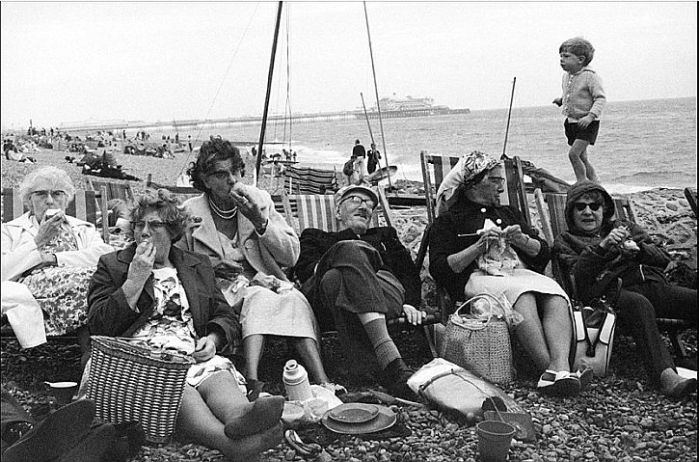

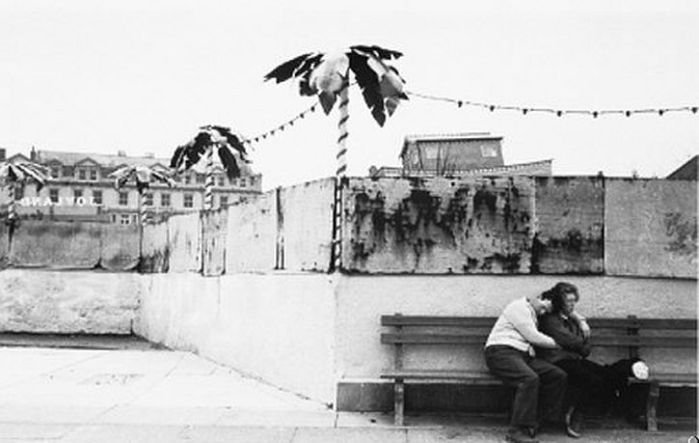
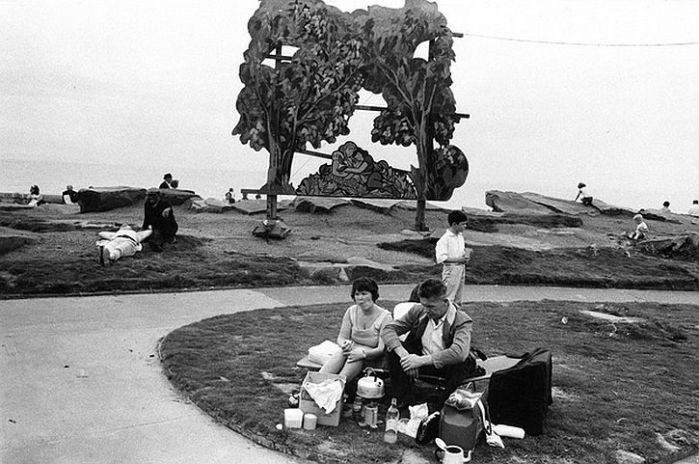











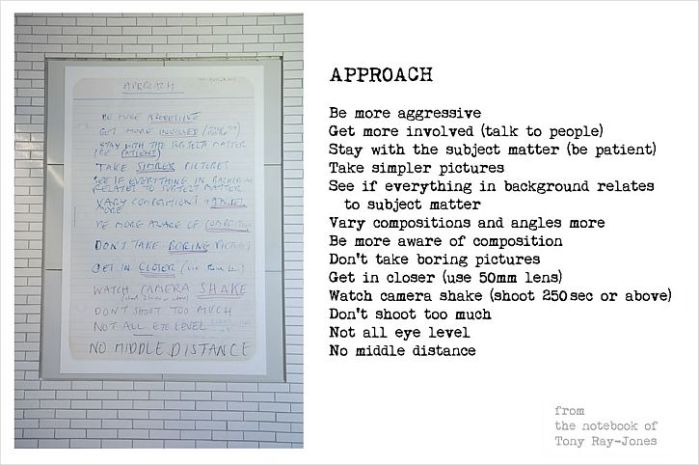





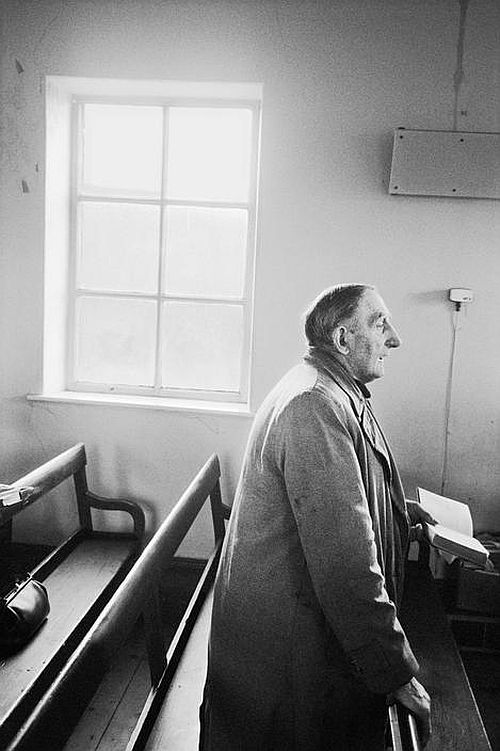



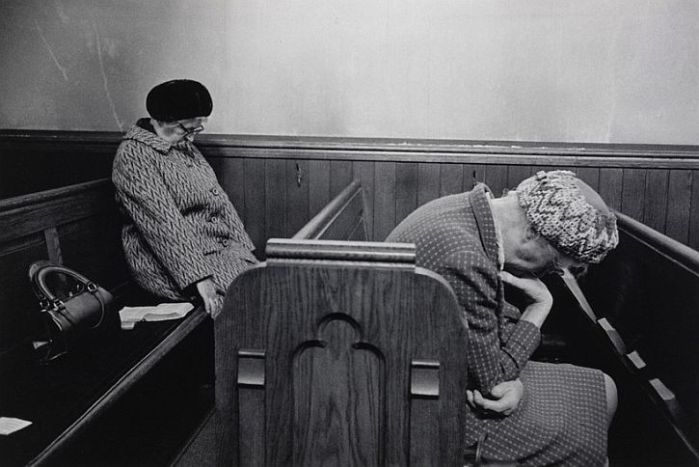






Thanks for that. Your visit to London was obviously very fruitful.
Interest ignited I will keep an eye open for when either of these two photographers have exhibitions ‘up north’ or fork out the train fare for a trip to London.
Two details from the images stood out for me.
In your second Tony Ray-Jones photo Possibly Worthing 1967-68 the little hooded girl in the background is pure Lowry, another observer of the absurd.
And the Martin Parr photo of Crimsworth Dene for ladies congregation in a lane comes from the same genre as Ray Clarke’s Last of the Summer Wine.
We have all been in their world.
You’re right on both counts, bowlandclimber. Maybe the National Media Museum in Bradford will show Tony Ray-Jones photos after this exhibition finishes in March. I’ve emailed Open Eye gallery here in Liverpool to suggest the idea.
I love these! The story telling quality of them reminds me of Norman Rockwell paintings, especially the “The Southport, 1967” photograph with the beautiful but bored blonde girl, the young man behind her ogling and the old man who is past caring and would rather have a cup of tea. The mod girl on “Brighton Beach, 1967” is another favourite and demonstrates the complexities of listening to music outdoors before iPods! I’ve never heard of the photographer before so thank you for the post.
The Southport image is, I think outstanding – but there are so many photos by Tony Ray-Jones that just stop you in your tracks! Thanks for reading and commejnting, Glen.
Marvellous, Gerry. Now I am not only homesick for England but for the England of my childhood. We used to have caravan holidays in Cromer and I remember well the pebbles, the windbreakers, the freezing North Sea, sand in our picnics and that “quiet determination”.
I fear the England of our childhood is long gone, Tessa. We seem to become more American every day: the latest example being that we’ve now got Black Friday. Next it’ll be Thanksgiving – you bet!
Hi Gerry I was wondering if you are aware of where we can get a copy of Ray Jones’s photo of the girl sitting on the beach with her record player from please? Thanks Mel..
I’m sorry, Melanie, I don’t. Even his books are out of print or reselling on Amazon for hugely inflated prices.
Wonderful! Thank you
I stumbled across this site by accident yesterday, I have shared it with several people already. Thank you so much for introducing me to the work of these two wonderful photographers.